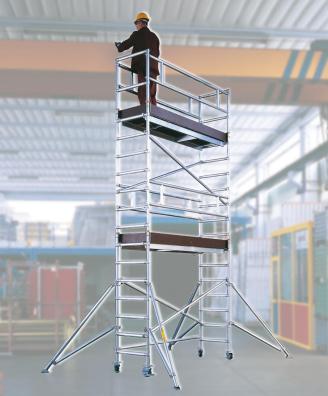

Involving workers in the choice of PPE improves their safety
The times when the heads of the quality assurance, prevention or procurement departments were the only ones to decide are over. Increasingly more companies also rely on their employees’ opinion in the choice of personal protection equipment, that will enable them to work with the utmost safety without hampering their comfort and efficiency.
One of the main problems that has traditionally plagued our country is that many companies considered that occupational hazard prevention was an obligation that entailed an expense for them, instead of an investment. Although this mistaken idea was mainly common in SMEs, we must not forget that they represent over 90% of the Spanish business sector. “For the longest time this has delayed the introduction of improvements for occupational protection”, explains Maximino Martínez Tilve, Commercial Director in Spain and Portugal for Nitrex Seguridad Laboral.
However, this expert considers that in recent years there has been great progress on these improvements and companies are increasingly aware of personal protection in their prevention plans. He also pointed out that there is still a long way to go, because some SMEs “are still reticent to follow this path”.
Works at height are among the sectors requiring special safety measures. Carmen Álvarez, Manager of Hispano Industrias Svelt, points out the need to “increase occupational safety during works that require the use of ladders and scaffolding, given the risk of falling”. She stressed that “companies must provide their employees with certified equipment, in addition to providing them with the necessary and sufficient training for them to use them properly”. And she added, “it is mandatory to perform regular documented revisions, and visual revisions before each use”.
Protective equipment
Although there is still room for improvement, most companies are taking huge steps to guarantee the safety of their workers, a goal where personal protection equipment plays a key role, as stated by Maximino Martínez Tilve. “There is evident progress in the selection of PPE and in their suitability for each type of activity; the ones best suited to each type of job are chosen, and a lot of this has to do with the example of the multinational companies that have opened in Spain and have slowly created a culture, that has also expanded to national companies”.
One of the key aspects of this process is the progressive involvement of workers in choosing the PPEs that they are going to use. As explains Martínez, “before, only the heads of prevention, quality assurance or procurement were involved in this decision, without taking into account employees’ opinions”. And this could lead to two major problems: “That the employee did not work comfortably with their equipment (gloves, boots, glasses...) and that they used them less than they should, thus exponentially increasing the risk of having an accident”. For example, “according to an industry study, between 40% and 50% of hand-related accidents happened because gloves were not worn at the time, not because they did not protect”.
Companies are beginning to understand that to involve workers in the choice of their protective equipment is important because “they know better than anyone the risks entailed by their job and they can provide first-hand knowledge on their needs, for example, if they require a more tactile, comfortable and cooler glove, that will better protect from cuts and from chemicals, etc.”. Additionally, if this equipment meets the worker's needs, it can make their work “more productive”.
Ladders and scaffolding
Carmen Álvarez, with Hispano Industrias Svelt, explains that Royal Decree 2177 of 2004 establishes the minimum health and safety provisions on use of work equipment and recommends choosing them following the current UNE standards for those that are not subject to CE marking, such as ladders (UNE EN131 and mobile scaffolding UNE EN1004).
“When buying a new ladder -she says-, one should take into account that only the ones manufactured following these standards can bear the reference mark “EN 131”, in addition to other indications to identify the manufacturer, type of ladder, date of manufacture and/or serial number, maximum load and, where applicable, the ladder’s inclination, and pictograms showing the positions for use that are allowed and forbidden”.
The royal decree highlights training in the case of mobile scaffolding. However, “there are currently very few subsidised training courses on works at height using ladders and scaffolding”. Álvarez points out that “as manufacturers, we collaborate with certified training schools that provide Fundae courses, so that our clients can receive this mandatory training. Svelt provides highly-documented manuals and assembly plans for scaffolding, and we collaborate by producing training guides and control and revision sheets for our products, listing the main hazards”.
This expert advises that worker involvement in prevention is also essential in this field. “A ladder is a product that we are all familiar with since childhood, therefore we are not very afraid of it, especially if it is a low one, but when we look at statistics, we find that a large number of occupational accidents happen by falling from ladders”.
On the other hand, working on scaffolding requires strict safety measures. In recent years, increasingly more projects to reform businesses and homes have begun using new models of scaffolding. “Whereas traditionally it was attached to the façade, now it is common to use mobile scaffolding, that makes work quicker and where the worker is in an enclosed and safe area for work at height.”.





